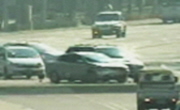- SUMMARY AND RECOMMENDATlONSCHAPTER1. INTRODUCTION
- 1.1 Background of the Study
- 1.2 Objective of the Study
- 1.3 Overall Study Framework
- 1.3.1 Overall Analysis Framework
다국어 입력
あ
ぁ
か
が
さ
ざ
た
だ
な
は
ば
ぱ
ま
や
ゃ
ら
わ
ゎ
ん
い
ぃ
き
ぎ
し
じ
ち
ぢ
に
ひ
び
ぴ
み
り
う
ぅ
く
ぐ
す
ず
つ
づ
っ
ぬ
ふ
ぶ
ぷ
む
ゆ
ゅ
る
え
ぇ
け
げ
せ
ぜ
て
で
ね
へ
べ
ぺ
め
れ
お
ぉ
こ
ご
そ
ぞ
と
ど
の
ほ
ぼ
ぽ
も
よ
ょ
ろ
を
ア
ァ
カ
サ
ザ
タ
ダ
ナ
ハ
バ
パ
マ
ヤ
ャ
ラ
ワ
ヮ
ン
イ
ィ
キ
ギ
シ
ジ
チ
ヂ
ニ
ヒ
ビ
ピ
ミ
リ
ウ
ゥ
ク
グ
ス
ズ
ツ
ヅ
ッ
ヌ
フ
ブ
プ
ム
ユ
ュ
ル
エ
ェ
ケ
ゲ
セ
ゼ
テ
デ
ヘ
ベ
ペ
メ
レ
オ
ォ
コ
ゴ
ソ
ゾ
ト
ド
ノ
ホ
ボ
ポ
モ
ヨ
ョ
ロ
ヲ
―
http://chineseinput.net/에서 pinyin(병음)방식으로 중국어를 변환할 수 있습니다.
변환된 중국어를 복사하여 사용하시면 됩니다.
예시)
- 中文 을 입력하시려면 zhongwen을 입력하시고 space를누르시면됩니다.
- 北京 을 입력하시려면 beijing을 입력하시고 space를 누르시면 됩니다.
А
Б
В
Г
Д
Е
Ё
Ж
З
И
Й
К
Л
М
Н
О
П
Р
С
Т
У
Ф
Х
Ц
Ч
Ш
Щ
Ъ
Ы
Ь
Э
Ю
Я
а
б
в
г
д
е
ё
ж
з
и
й
к
л
м
н
о
п
р
с
т
у
ф
х
ц
ч
ш
щ
ъ
ы
ь
э
ю
я
′
″
℃
Å
¢
£
¥
¤
℉
‰
$
%
F
₩
㎕
㎖
㎗
ℓ
㎘
㏄
㎣
㎤
㎥
㎦
㎙
㎚
㎛
㎜
㎝
㎞
㎟
㎠
㎡
㎢
㏊
㎍
㎎
㎏
㏏
㎈
㎉
㏈
㎧
㎨
㎰
㎱
㎲
㎳
㎴
㎵
㎶
㎷
㎸
㎹
㎀
㎁
㎂
㎃
㎄
㎺
㎻
㎽
㎾
㎿
㎐
㎑
㎒
㎓
㎔
Ω
㏀
㏁
㎊
㎋
㎌
㏖
㏅
㎭
㎮
㎯
㏛
㎩
㎪
㎫
㎬
㏝
㏐
㏓
㏃
㏉
㏜
㏆
Study of Road User Charges Final Report : (도로사용자부담조사 최종보고서)
한글로보기https://www.riss.kr/link?id=G3627200
- 저자
- 발행기관
-
발행연도
1985년
-
작성언어
English
- 주제어
-
자료형태
한국건설기술연구원
-
수록면
271
-
0
상세조회 -
0
다운로드
부가정보
목차 (Table of Contents)
- SUMMARY AND RECOMMENDATlONSCHAPTER1. INTRODUCTION
- 1.1 Background of the Study
- 1.2 Objective of the Study
- 1.3 Overall Study Framework
- 1.3.1 Overall Analysis Framework
- 1.3.2 Trip Demand Forecast Framework
- 1.3.3 Major Descriptors for the Road Sector
- 1.3.4 Design Framework for User Charge Structures
- 1.4 Acknowledgements
- CHAPTER2. REVIEW OF CURRENT ROAD USER CHARGE PROGRAM
- 2.1 Overview of Taxation System
- 2.1.1 Direct and Indirect Taxes
- 2.1.2 National and Local Taxes
- 2.1.3 Characteristics of User Charges
- 2.2 Structure of Road User Charge
- 2.2.1 Overview
- 2.2.2 Current Practices of Road User Charge
- 2.3 Institutional Arrangement of Road Administration
- 2.3.1 Road Classification and Responsibility
- 2.3.2 Planning
- 2.3.3 Construction
- 2.3.4 Maintenance
- 2.3.5 Law Enforcement and Safety
- 2.4 Road Finance
- 2.4.1 Revenues and Expenditures of the Highway Sector
- 2.4.2 Financing Mechanism
- 2.4.3 Implementation of Road Budgets
- CHAPTER3. REVIEW Of THE HIGHWAY SECTOR
- 3.1 Socio-Economic Environment
- 3.1.1 The Role of the Transportation Sector in the National Economy
- 3.1.2 Spational Organization
- 3.2 Travel Demand
- 3.2.1 Review of Travel Patterns
- 3.2.2 Forecast Travel Demand
- 3.3 Vehicle Population
- 3.3.1 Classification of Vehicle Types
- 3.3.2 Trends in the Vehicle Population
- 3.3.3 Forecast Vehicle Population
- 3.4 Vehicle Use
- 3.4.1 Characteristics of Vehicle Use
- 3.4.2 Forecast Vehicle-Kilometers-of-Travel
- 3.5 Highway Investment
- 3.5.1 Review of Previous Investment Policies
- 3.5.2 Forecast Road Network
- 3.5.3 Forecast Highway Expenditure
- CHAPTER4. ASSESSMENT OF CURRENT USER CHARGE PROGRAM
- 4.1 Objectives and Constraints of User Charge Program
- 4.1.1 Objectives
- 4.1.2 Constraints
- 4.2 Highway Cost Allocation Method
- 4.2.1 Introduction
- 4.2.2 Average Expenditure Assignment Method
- 4.2.3 Modified Average Expenditure Assignment Method
- 4.2.4 Short-Run Marginal Cost Pricing Method
- 4.3 Road User Charges Paid by Vehicle Class
- 4.3.1 Average Expenditure Assignment Method
- 4.3.2 Modified Average Expenditure Assignment Method
- 4.3.3 Short-Run Marginal Cost Pricing Method
- 4.4 Road User Charges Structure
- 4.4.1 Impact of User Charges on transport Demands
- 4.4.2 Assessment of Current User Charge Structure
- 4.5 Funding Mechanism
- 4.5.1 工ntroduction
- 4.5.2 Assessment of Revenue Channelization Procedure
- 4.5.3 Assessment of Budgeting Process
- 4.6 Investment Policies of the Highway Sector
- 4.6.1 Prospects on Interurban Road Investment
- 4.6.2 Urban Road Network
- CHAPTER 5. DEVELOPMENT OF USER CHARGE STRUCTURE ALTERNATIVES
- 5.1 Improvement Strategies
- 5.1.1 Road Investment Policies
- 5.1.2 Road User Charges
- 5.2 Generation of Improvement Options
- 5.2.1 Introduction
- 5.2.2 Road Investment Policy
- 5.2.3 Pricing Policy for Road User Charges
- 5.2.4 User Charge Structure
- 5.3 Identification of Alternatives
- 5.4 Characteristics of Alternatives
- 5.4.1 User Charge Structures and Their Design Procedure
- 5.4.2 Implication of Alternatives on Future Transportation Systems
- CHAPTER6. EVALUATION OF USER CHARGE STRUCTURE ALTERNATIVES
- 6.1 Overview
- 6.2 Evaluation Criteria
- 6.2.1 Direct Impacts on the Users of Road Network
- 6.2.2 Financial Impacts
- 6.2.3 Other Criteria
- 6.3 Selection of Best Alternative and its Evaluation
- 6.3.1 Overall Comparisons of Various Alternatives
- 6.3.2 User Charge Structure of the Chosen Alternative
- 6.3.3 Impact of the Selected Alternative
- CHAPTER7. ALLOCATION OF ROAD USER CHARGE REVENUES
- 7.1 Realignments of Road Finance System to facilitate Implementation
- 7.1.1 Prospect of Revenues and Expenditures
- 7.1.2 Directions of the Change in Road Finance
- 7.2 Stability in Road Budget of the Central Government
- 7.2.1 Current Situation
- 7.2.2 Establishment of Road Fund
- 7.2.3 Establishment of Road Special Account
- 7.3 Reallocation of Revenues between the Central Government and Local Autonomous Bodies
- 7.3.1 Reallocation of Revenues between the Central Government and Local Autonomous Bodies
- 7.3.2 Alternative of Limiting to Minor Revisions
- 7.3.3 Alternative of Road Fund
- 7.3.4 Alternative of the Special Account
- 7.3.5 Distribution Formula
- 7.4 Recommendations for Funding Mechanism
- 7.4.1 Evaluation of Alternatives
- 7.4.2 Alternatives for Stable Road Budget Flows
- 7.4.3 Rechannelling of User Charge Revenues to the Local Autonomous Bodies
- APPENDIX









